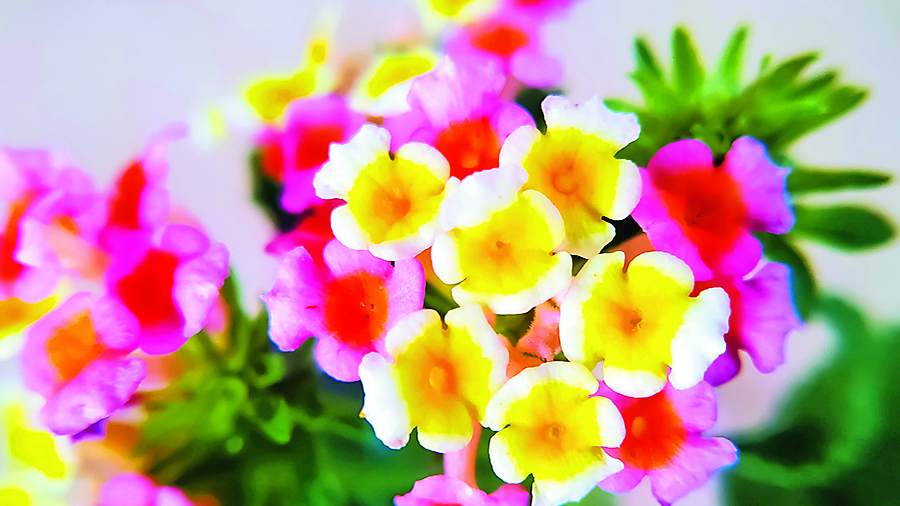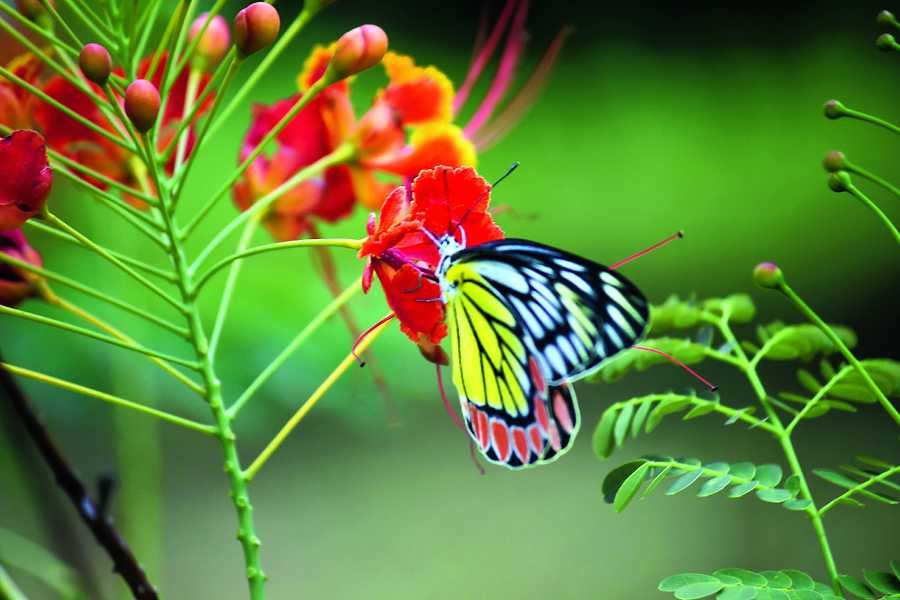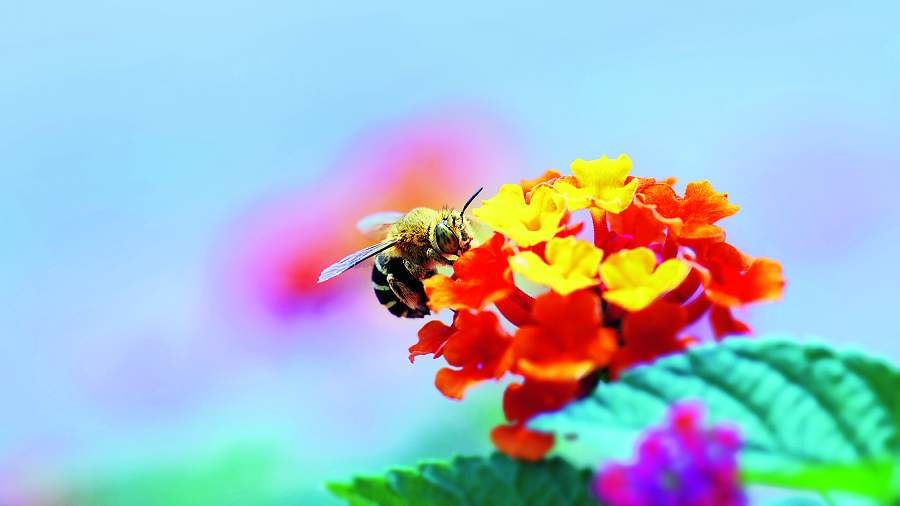The Lantana is easily one of the most popular flowers to grow in our climate. They are aromatic, produce beautiful flowers throughout the year and are used in traditional medicine. They are drought-tolerant and require nominal maintenance. No wonder they are extensively used for landscaping.
Lantanas come in various colours like yellow, red, white and purple and, in fact, change colour as they mature and produce flowers in clusters, called umbels. They are also important in butterfly gardening and butterflies are attracted to these flowers.
These flowers are native to tropical Africa and the Americas. Most Lantanas are invasive species and in Australia, Asia and Africa they are considered to be weeds. Lantana species are widely cultivated for their flowers in tropical, subtropical and temperate climates.

Arijit Poddar

Feed Lantana plants in pots more frequently with a balanced, NPK 20:20:20 fertiliser every month
There are many species of Lantana and their hybrids are in cultivation. Lantana camara, Lantana achyranthifolia, Lantana horrida, Lantana involucrata, Lantana montevidensis, Lantana notha, Lantana pastazensis, Lantana urticoides and their numerous hybrids are common as potted plants or used for landscaping.
Here’s how to care for the plants-
Soil: Lantanas need well-draining soil and prefer a neutral pH soil. Use 50 per cent garden soil, 30 per cent coarse sand and 20 per cent vermicompost or well mature cow manure. Add one cup bone dust, two tablespoons of super phosphate and one tablespoon potash to it.
Light: Lantanas like the sun. The plant should receive at least six hours or more of direct sunlight every day. They will produce less flowers if you kept in partial shade for very long.
Water: Lantanas do not need much water once established. Newly planted ones require frequent watering but once established are are tolerant of somewhat dry conditions. Water when media is relatively dry and water thoroughly. Do not water from above or the flowers will get ruined.

Propagation by seed germination or branch-cutting are two common methods are used to propagate Lantanas
Fertiliser: Feed Lantana plants in pots more frequently with a balanced, NPK 20:20:20 fertiliser every month. The plants do not require much fertiliser when planted in the ground so once, in early March, should be sufficient. Too much fertiliser can decrease the abundance of flowers.
Pests / diseases: The most common pests to Lantanas are aphids, lace bugs, mealybugs, whiteflies and spider mites. Use regular insecticide like Rogor/ Tafgor etc to eliminate pests or diseases to save Lantanas.

Lantanas need well-draining soil and prefer a neutral pH soil
Propagation: Propagation by seed germination or branch-cutting are two common methods are used to propagate Lantanas. Seed germination is a time-taking process so rooted-cutting is often preferred. Take stem cuttings of three to four inches, use rooting hormone and stick the cutting in coarse sand. Keep in a shady place and water regularly. It will take two weeks to a month for new root growth.

Different kinds of Lantanas found around the world
Care tips: To promote branching and re-blooming, you need to regularly prune the plant. Cut the tips or deadhead (remove the dead flower heads from your plants) at regular intervals. Remove the plant's fruit and berries as well. Chop stems in March to six to 12 inches from the ground to promote branching and flowering.
